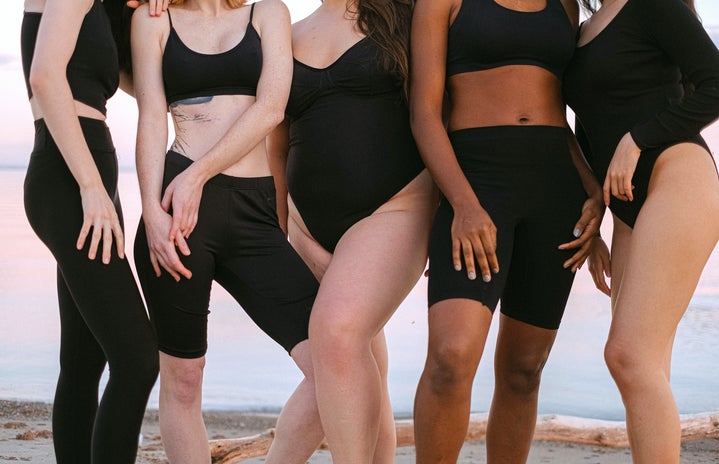In the last year or so, TikTok has become everyone’s go–to app for practically everything — and fashion is no different.
When you think of viral fashion trends on TikTok, thousands of clothing pieces and accessories may come to mind. One stand–out piece is Mirror Palais’ Fairy dress, a sparkly mini dress embellished with crystals that spawned millions of knockoffs — and garnered the app millions of views. There’s also House of Sunny’s sold–out Hockney dress, which was followed by commercial successes for many of the brand’s other pieces. Other viral items include Aritzia’s Melina pants, With Jean’s Alexa dress, Zara’s straight leg jeans, and countless others.
These pieces are fan favorites for a reason: they’re statement pieces guaranteed to win anyone’s attention. However, another factor that unites these clothes isn’t nearly as positive — none of the aforementioned pieces come in extended sizes. In fact, hardly any of the featured pieces on fashion TikTok are even available in plus–sizes.
The fashion industry’s problem with plus–sizes extends far beyond the realm of TikTok, and is a complex and multifaceted issue. However, there’s one thing that’s abundantly clear: while most women currently living in the United States are plus–size, plus–size fashion only takes up a small sliver of the market.
The Internet and social media have prompted a significant social shift in how fashion is viewed by displaying inspiration, shops, and styles from every corner and packet of the world. While the “fashion elite” may not be servicing and representing this (not) “niche” demographic, plus–sized customers are establishing communities online, and independent companies are popping up all over the world, taking mega brands to task.
Traditional media has also been bypassed by online media outlets. And this is big for plus–size buyers, who are almost never featured in traditional fashion magazines. Now, independent fashion bloggers are utilizing their platforms to advocate for underrepresented groups, such as plus–sizes and petites.
But there are still long strides that need to be made, even on the Internet. Take the resurgence of Y2K fashion, for instance. The style has made a revival, propelled by It girls Bella Hadid, Kendall Jenner, and Dua Lipa. Some popular Y2K trends that most people are familiar with include low–rise jeans, tube tops, velour tracksuits, and mini skirts. And Gen Z can’t get enough of it.
TikTok videos with the hashtags “#Y2KAesthetic” and “#Y2Kfashion” have received a total of 405 million views and counting. In the 2000s, having a slim figure was considered the best accessory for any outfit. It was very clear when pop singers and celebrities of the period were hailed as style inspirations just because they wore clothing that emphasised their exposed flat stomachs. Meanwhile, tabloids and other media would tear down people wearing the same outfits if they didn’t fit conventional beauty standards. No one cared if plus–sized people were included in fashion trends.
So, has anything changed since then? Initially, it may seem like the answer is yes, but in reality it’s a no.
Sure, Gen Z is more welcoming of all body sizes, but the “skinny or fashionable” trend is only one example of how we aren’t as progressive as we say we are. When going through the “Y2K” tags on social media, it’s clear that the bulk of people garnering notoriety for their Y2K fashion photographs and videos are slim. These trends ignore the difficulties that plus–sized individuals face. Plus–sized people continue to be excluded from mainstream fashion due to a lack of wardrobe selection in both fast fashion as well as secondhand fashion trends.
Even though there seems to be more choice in plus–size apparel now than there was in the 2000s, this so–called variety is not readily available at all retailers. Many brands exclusively sell plus–size clothing online, which often means it’s more expensive. Thus, the sizes may be inaccessible to individuals who need them, and even then they rarely extend beyond 3X or 4X.
Achieving inclusivity can seem impossible, especially when it comes to the fashion industry. However, there are things we can do when it comes to influencing Internet trends. You can begin by giving likes and views to plus–sized people who create fashion content for the plus–size community on social media.
Plus–sized folks have just as much of a right as those who wear a size 10 or 12 to participate in fashion trends and feel good about their attire. Fashion is not, and never should, be an elite club.


